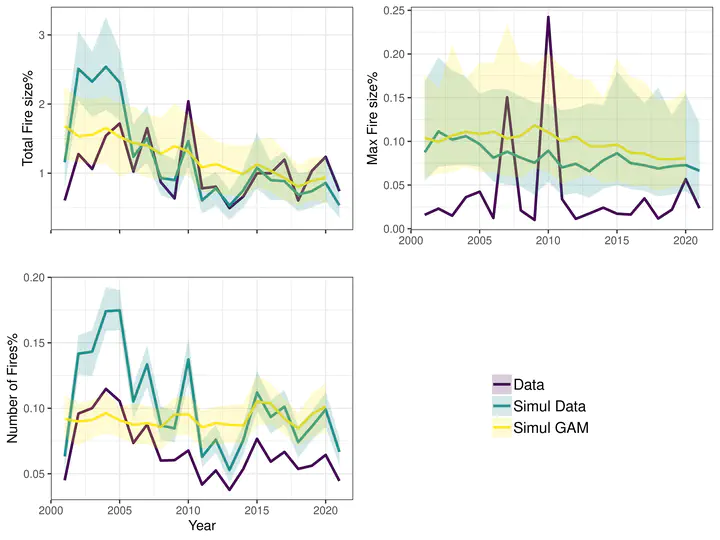
Abstract
Fire is one of the most important disturbances of the earth-system, shaping the biodiversity of ecosystems and particularly forests. Climatic change and other anthropogenic drivers such as deforestation, land use change, could produce potentially abrupt changes in fire regimes, triggering more profound transformations like the transition from forests to savannah or grasslands ecosystems. Large biodiversity loss could be produced if these transitions occur. Climate change could enhance fire ignition and spread, potentially producing more extensive, intense, and frequent fires. In this work, we use a simple forest-fire model and analyze the possible changes in the Amazon region’s fire regime that depend on climate change-related variables. We parameterize this model using remote sensing data on fire extension and temperature, by considering climate projections for the 21st century, and find that there are two possible regime changes: a critical regime that implies high variability in fire extension and mega-fires, and an absorbing phase transition which would produce the extinction of the forest and transition to a different vegetation state. The fitted model and projections suggest that the Amazon region is not close to any of these regime changes and predicts a consistent increment in fire extension. Nonetheless, this increment combined with the factors not considered in the model, such as deforestation, may cause drastic changes in the region.